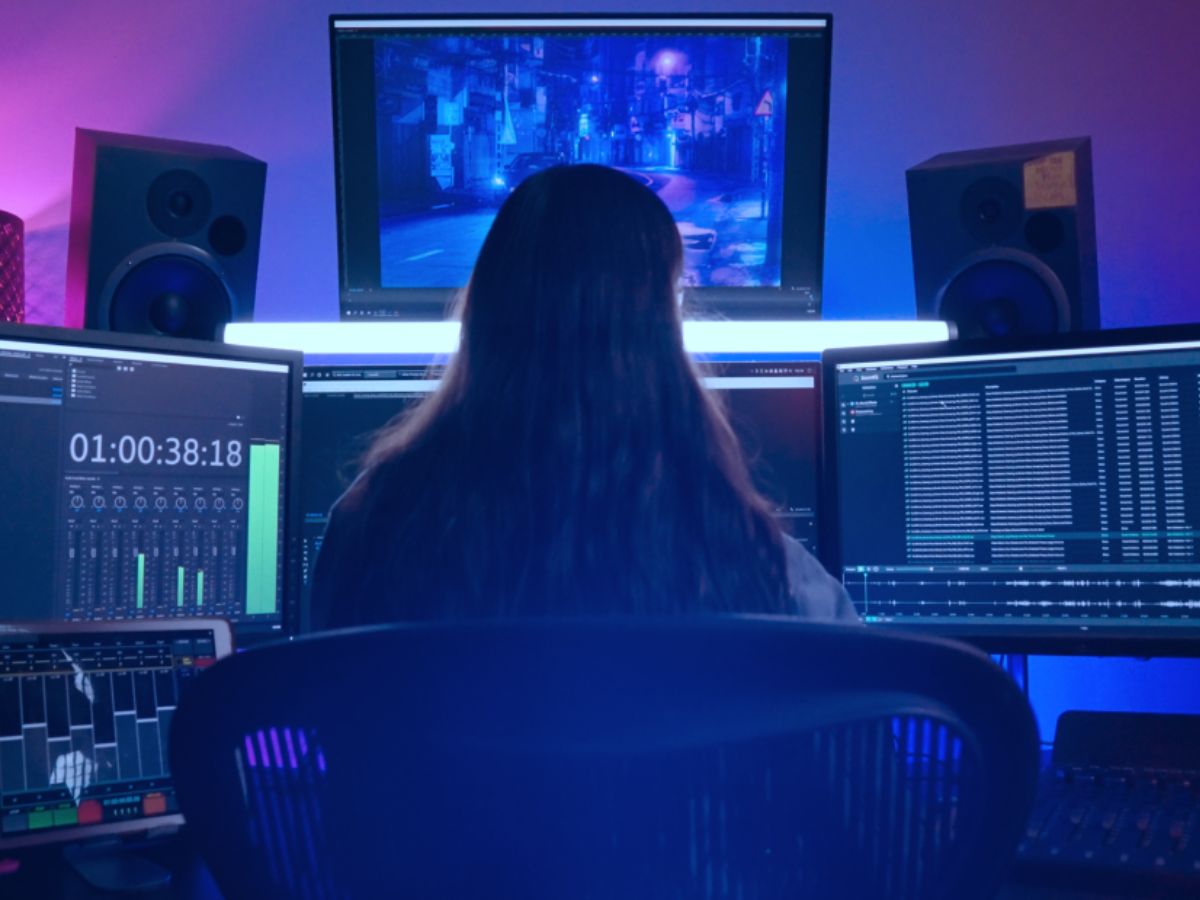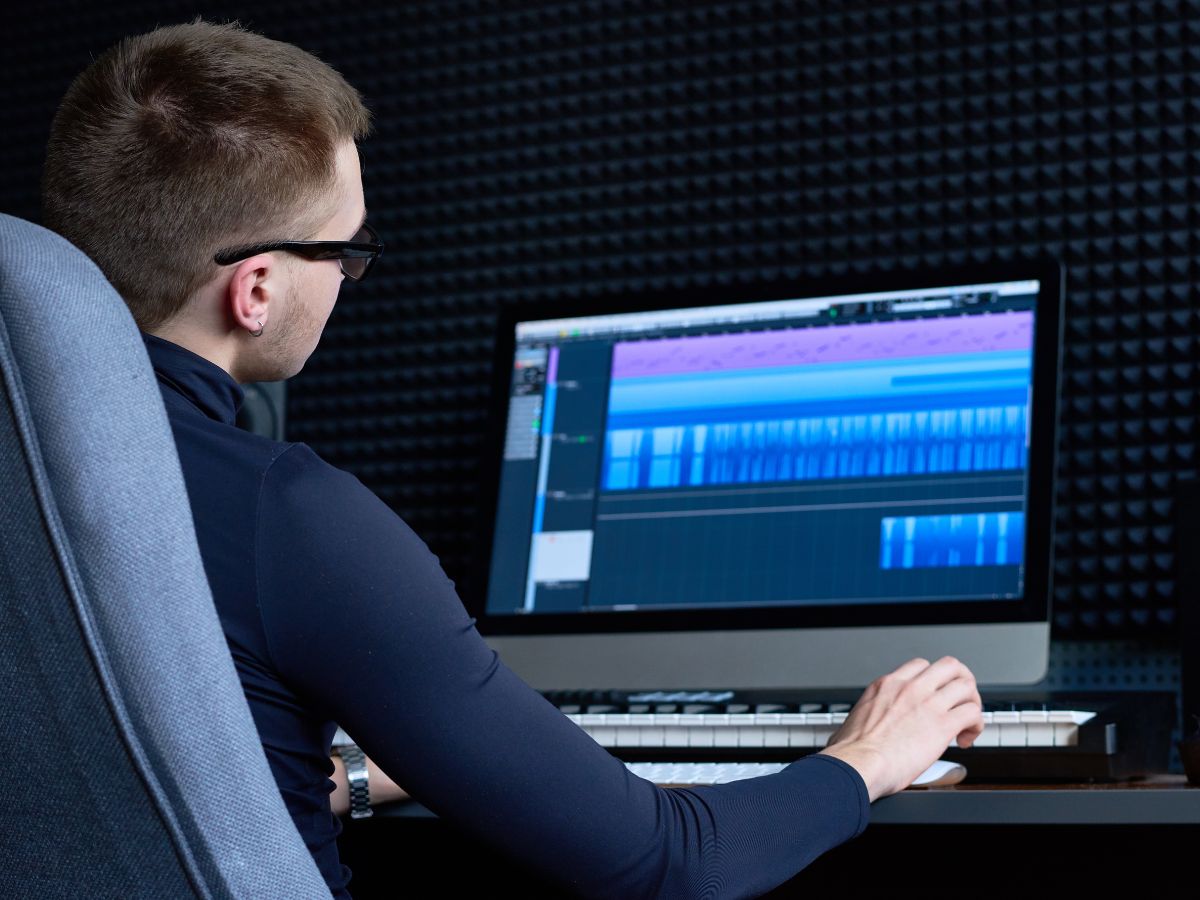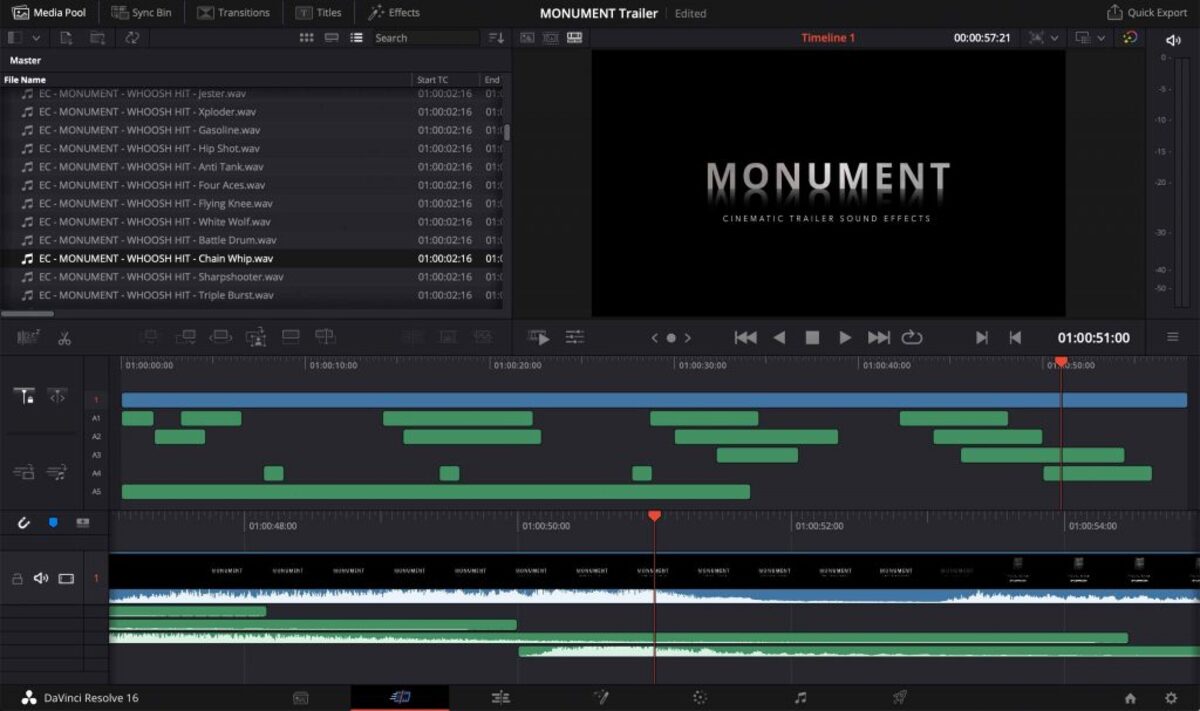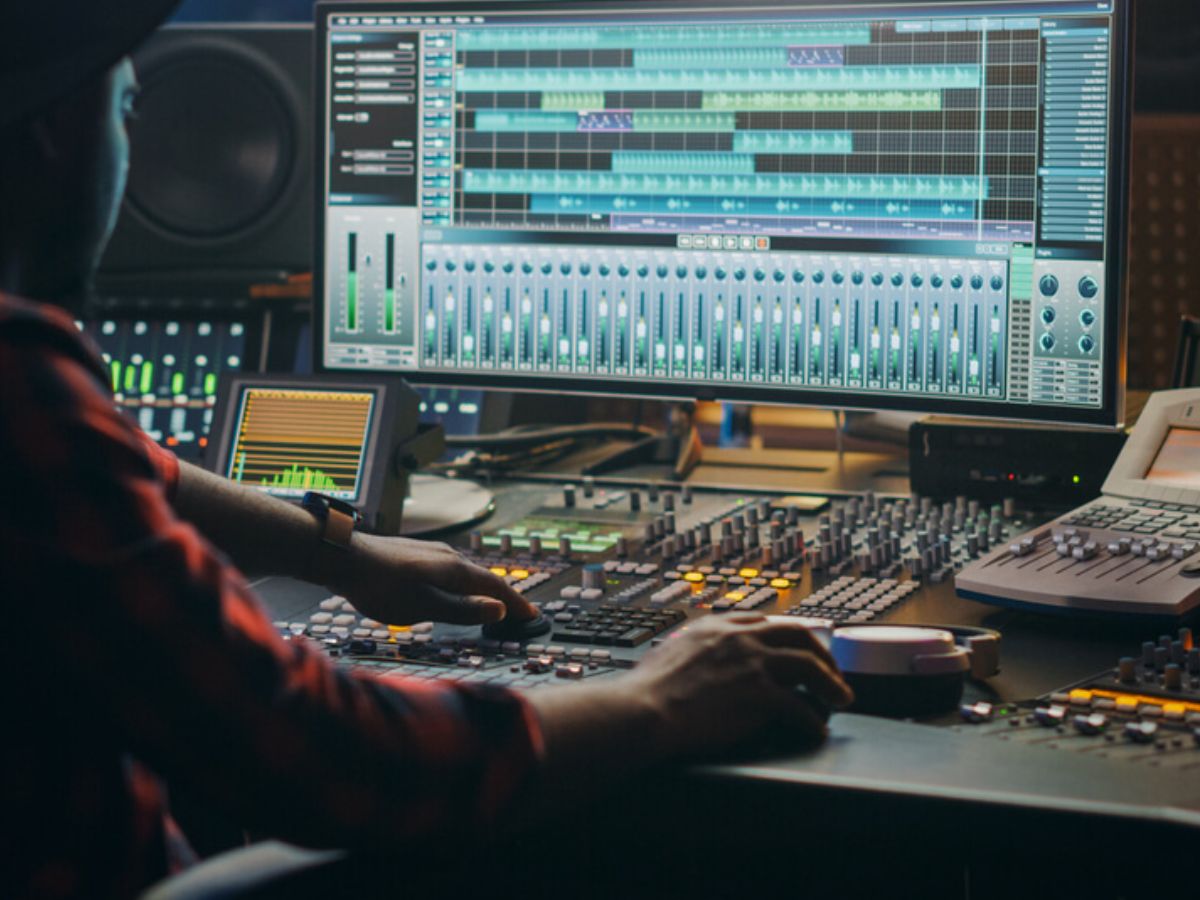Home>Production & Technology>Sound Effects>What Is The Name Of The Process Used To Create Everyday Sound Effects In Films
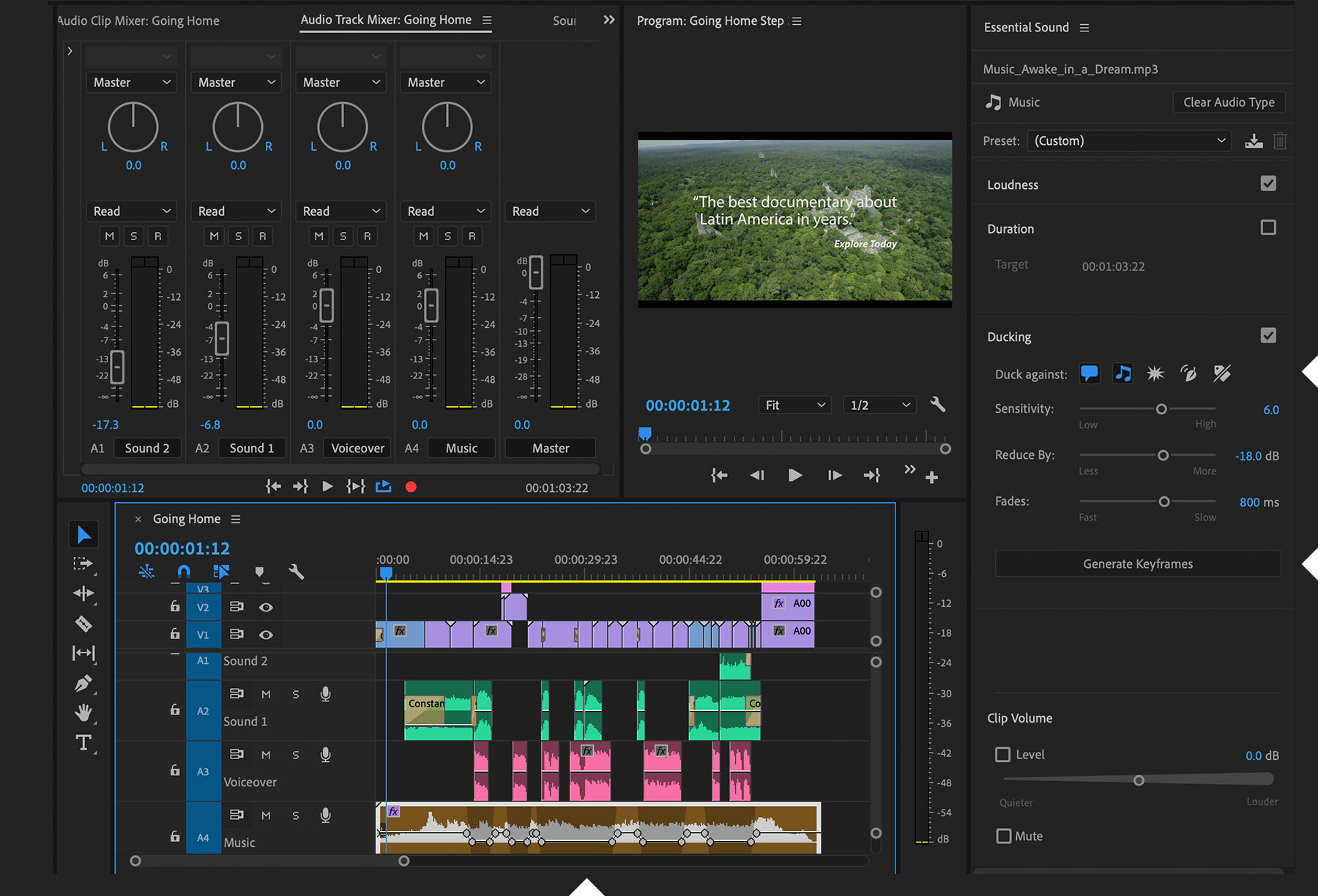

Sound Effects
What Is The Name Of The Process Used To Create Everyday Sound Effects In Films
Published: November 20, 2023
Learn about the process of creating captivating sound effects for films, enhancing the everyday movie experience. Explore the fascinating world of sound effects.
(Many of the links in this article redirect to a specific reviewed product. Your purchase of these products through affiliate links helps to generate commission for AudioLover.com, at no extra cost. Learn more)
Table of Contents
Introduction
Have you ever wondered how the captivating sound effects in movies are created? From the sound of footsteps on different surfaces to the rustling of clothing or the sound of a door closing, these everyday sounds are meticulously crafted by skilled artisans known as Foley artists. They play a crucial role in bringing authenticity and immersion to the on-screen experience, making us feel like we are part of the story.
Foley artistry is a specialized field within the realm of sound effects design and production. It involves the reproduction and enhancement of sound effects for movies, television shows, video games, and other multimedia projects. These sound effects, commonly referred to as Foley sounds, are created and recorded in a studio during the post-production stage of a film.
Sound is a powerful storytelling tool that helps convey emotions, set the mood, and enhance the overall viewing experience. Foley artistry adds a layer of realism to the visuals, making the on-screen actions feel tangible and believable. It contributes to the suspension of disbelief and helps the audience fully immerse themselves in the narrative.
While sound effects can be generated through computer-generated imagery (CGI) and sound libraries, the art of Foley involves using real-world objects and performing specific actions to recreate sounds that synchronize perfectly with the on-screen visuals. This meticulous attention to detail ensures that each sound effect aligns seamlessly with the actions portrayed by the actors.
In the following sections, we will explore the fascinating process of creating everyday sound effects in films, the role of Foley artists, the tools and techniques they use, as well as the challenges they face in their craft. Prepare to dive into the world of sound and discover the magic behind the scenes!
Foley Artistry and Its Importance in Films
Foley artistry is a fundamental aspect of filmmaking that often goes unnoticed by the audience. These skilled artists add depth and authenticity to the audio experience, complementing the visuals and enhancing the overall immersion of the film. Without the meticulous attention to sound details provided by Foley artists, movies would feel flat and lack the realism that draws us into the story.
One of the key aspects of Foley artistry is the creation of everyday sound effects. While some sounds naturally occur during filming, such as dialogue and ambient noises, many crucial sounds are either missing or need enhancement. This is where Foley artists step in to recreate these sounds and make them feel natural within the context of the film.
Imagine a scene where a character is walking through the rain-soaked streets of a city. Without the Foley artist’s expertise, the sound of footsteps would be absent or insufficient. However, through the use of specialized techniques and creative sound manipulation, the Foley artist can recreate the sound of wet shoes splashing in puddles, adding depth and realism to the scene.
The attention to detail provided by Foley artistry extends beyond footsteps. Foley artists also recreate sounds like doors creaking open or closing, the rustling of clothing, the clinking of glasses, or even the sound of a pen clicking. These subtle everyday sounds may seem insignificant, but they contribute greatly to the overall believability of a scene.
Another essential aspect of Foley artistry is the ability to enhance or exaggerate sounds for dramatic effect. For example, the sound of a punch in an action scene may need to be enhanced to make it impactful. Foley artists use their creative skills and various props to recreate the desired effect, ensuring that the on-screen action is not only visually captivating but also aurally thrilling.
Foley artistry is not limited to live-action films; it is equally crucial in animated films and visual effects-heavy productions. Even if all the visuals are computer-generated, the Foley artist brings in a sense of realism by recreating physical sounds. This layer of immersion helps the audience connect emotionally with the characters and the story, regardless of the genre or medium of the film.
Overall, Foley artistry plays a vital role in bringing films to life. Through their expertise and attention to detail, Foley artists create a rich audio landscape that heightens the cinematic experience. They ensure that every sound, no matter how mundane or extraordinary, contributes to the narrative and engages the audience on a multisensory level. So, the next time you watch a film and find yourself captivated by its audio, take a moment to appreciate the artistry of the Foley artists behind the scenes.
The Process of Creating Everyday Sound Effects in Films
The process of creating everyday sound effects in films is a meticulous and creative endeavor that involves several stages. Foley artists use a combination of physical props, specialized equipment, and their skills to recreate sounds that synchronize perfectly with the on-screen visuals. Let’s take a closer look at this fascinating process.
1. Scene Analysis: Before the Foley artists begin their work, they carefully analyze each scene to determine the specific sound effects required. They pay close attention to the actions, movements, and interactions of the characters, as well as the environmental elements that need to be recreated.
2. Prop Selection: Once the scene has been analyzed, the Foley artist selects an array of props that will be used to create the sound effects. These props can range from common objects like shoes, keys, and clothing to more specialized items like coconut shells for horse hooves or cellophane for fire crackling.
3. Recording Setup: Foley artists work in a specialized recording studio known as a Foley stage. This stage is designed to minimize outside noise and provide a controlled environment for capturing high-quality audio. The setup includes various microphones strategically placed to capture the nuances of each sound effect.
4. Performance: Once everything is set up, the Foley artist begins the performance. They meticulously recreate each sound effect in real-time while watching the footage on a screen. This allows them to synchronize the sounds perfectly with the on-screen actions, ensuring a seamless auditory experience.
5. Layering and Mixing: After the initial performance, the Foley artist may add additional layers of sound to enhance or enrich the effects. This can include mixing different recordings or utilizing specialized sound libraries to achieve the desired result. The layers are carefully balanced to create a cohesive and realistic soundscape.
6. Editing: Once the performance and mixing are complete, the Foley artist meticulously edits the recorded sounds to remove any imperfections or inconsistencies. They ensure that each sound effect aligns perfectly with the visuals and seamlessly transitions from one action to another.
7. Integration: The final step involves integrating the Foley sound effects into the overall sound mix of the film. This is done by collaborating with the sound designer and the rest of the sound team to ensure that the Foley sounds blend seamlessly with dialogue, music, and other sound elements.
The process of creating everyday sound effects in films requires a deep understanding of sound, attention to detail, and a creative approach to problem-solving. Foley artists bring life and authenticity to the audio landscape of a film, enhancing the audience’s immersion and emotional connection to the story. Their dedication and expertise make even the most mundane actions on screen come alive through sound.
Understanding the Role of the Foley Artist
The role of the Foley artist is crucial in the process of creating everyday sound effects in films. They are the masters of sound, responsible for adding depth, realism, and emotional impact to the on-screen actions. Let’s explore the various aspects of their role and how they contribute to the overall audio experience of a film.
1. Sound Design and Creativity: Foley artists are not just technicians; they are highly skilled artists with a deep understanding of sound and its impact on storytelling. They use their creativity to explore different possibilities and techniques to recreate sounds using everyday objects and props. Their innovative approach allows them to capture even the subtlest nuances, adding layers of realism to the auditory experience.
2. Synchronization: One of the primary responsibilities of Foley artists is to synchronize the sound effects they create with the on-screen actions. They meticulously watch the footage and perform the sound effects in real-time to ensure perfect timing and alignment. This attention to detail helps create a seamless and immersive audiovisual experience for the audience.
3. Emotional Impact: Foley artists understand that sound has the power to evoke emotions and enhance the audience’s connection to the characters and the story. They bring life to the soundscape by capturing the subtle expressions, gestures, and movements that might go unnoticed. Through their craft, Foley artists amplify the impact of a scene, making it more engaging, thrilling, or emotionally resonant.
4. Collaboration: Foley artists work closely with the sound designer, director, and other members of the sound team to ensure that the sound effects seamlessly integrate with the overall audio mix. They communicate and exchange ideas to achieve the desired creative vision and maintain consistency throughout the film. Their ability to collaborate effectively is essential in delivering a cohesive and immersive sound experience.
5. Problem Solving: Foley artists often encounter challenges in recreating specific sounds that may not have a readily available solution. In such cases, they rely on their problem-solving skills to find innovative and creative ways to achieve the desired sound. This may involve experimenting with different props, techniques, or even collaborating with other artists to find unique solutions.
6. Quality Control: Foley artists have a keen ear for detail and a commitment to delivering high-quality sound effects. They meticulously review and fine-tune their recordings to ensure they meet the highest standards. This attention to detail is essential in maintaining a consistent and immersive audio experience.
Foley artists play an indispensable role in the filmmaking process. By using their creativity, expertise, and attention to detail, they elevate the auditory experience and immerse the audience into the world of the film. Their dedication to capturing the subtle sounds of everyday life and translating them onto the screen is what makes their contribution invaluable to the art of filmmaking.
Tools and Techniques Used in Foley Artistry
Foley artistry is a craft that requires specialized tools and techniques to create everyday sound effects in films. Foley artists utilize a combination of physical props, props-specific recording equipment, and creative techniques to capture the perfect sound. Let’s explore some of the essential tools and techniques used in Foley artistry.
1. Props: Foley artists rely on a vast array of props to recreate the sounds they need. These props can range from everyday objects like shoes, clothing, and kitchen utensils to more specialized items like coconut shells, wooden boards, or even custom-made props. Each prop is carefully chosen to achieve the desired sound and enhance the realism of the on-screen action.
2. Surfaces: Different surfaces produce distinct sounds when stepped on or interacted with. Foley artists utilize various surfaces such as creaky wooden floors, gravel, sand, or tiles to recreate footsteps or movement sounds. By selecting the appropriate surface, they can capture the specific texture and characteristic of each footstep or action.
3. Foley Pits and Surfaces: Foley pits or stages are specially designed studios with different surfaces embedded in the floor. These surfaces, such as soil, grass, or water, allow Foley artists to reproduce the sounds of walking or interacting with specific environments. The pits have built-in microphones to capture the sounds accurately and with clarity.
4. Foley Microphones and Recording Equipment: Foley artists use specialized microphones designed to capture the nuanced sounds of props and actions. These microphones are strategically positioned around the Foley stage to capture the best audio quality and spatial representation. Additionally, other recording equipment, such as boom poles, portable recorders, and mixing consoles, are used to ensure optimal sound capture and fidelity.
5. Creative Techniques: Foley artists employ a range of creative techniques to achieve desired sound effects. They might use different tricks, such as shaking a bag of cornstarch to mimic the sound of snow or manipulating various props to create unique sounds. Foley artists also utilize their own body movements and actions to enhance the realism of the effects, such as mimicking the sounds of cloth rustling or body impacts.
6. Layering and Mixing: Foley artists utilize layering and mixing techniques to add depth and complexity to the sound effects. By layering multiple recordings and manipulating their levels, they create a richer soundscape that enhances the auditory experience. This process involves carefully balancing the different elements to ensure that the sounds seamlessly complement the visuals.
7. Sound Editing Software: Foley artists utilize various sound editing software, such as Pro Tools or Adobe Audition, to polish and fine-tune the recorded sound effects. They can remove any unwanted noise, adjust volume levels, and synchronize the sounds precisely with the on-screen visuals. These software tools provide flexibility and control over the final sound mix.
Foley artists blend their technical expertise with a creative approach to bring sound effects to life. With their selection of props, specialized recording equipment, creative techniques, and sound editing software, they create soundscapes that enhance the cinematic experience and transport audiences into the world of the film.
Examples of Everyday Sound Effects Created by Foley Artists
Foley artists are masters of their craft when it comes to creating everyday sound effects in films. They have the ability to transform mundane actions into captivating auditory experiences. Let’s explore some examples of the everyday sound effects that Foley artists skillfully recreate to enhance the realism and immersion of films.
1. Footsteps: Foley artists meticulously recreate the sound of footsteps on various surfaces. Whether it’s the soft padding of bare feet on carpet, the echoing click of high heels on a marble floor, or the crunch of boots on gravel, Foley artists use a combination of props and techniques to bring the walking or running actions of characters to life.
2. Doors: The opening and closing of doors are common occurrences in films, and Foley artists play a crucial role in recreating the accompanying sound effects. They use props like door handles, hinges, and different types of doors to achieve the desired sound. The creak of an old wooden door, the metallic click of a latch, or the sound of a heavy door slamming all contribute to the realism of each scene.
3. Clothing: Foley artists create sound effects for various clothing movements, such as the rustling of fabric, the zip of a jacket, or the swishing of a dress. They use different textiles, props, and even their own clothing to generate realistic sounds that correspond to the visuals and enhance the character’s movements and actions on screen.
4. Eating and Drinking: Foley artists recreate the subtle sounds associated with eating and drinking. They use props like plates, cutlery, glasses, and food items to generate sounds that make the audience’s mouths water. Whether it’s the clinking of cutlery against a plate, the pouring of a beverage, or the crunch of a bite, Foley artists ensure that each action is accompanied by the appropriate auditory cues.
5. Phone Conversations: Foley artists are responsible for recreating the sound effects of phone conversations. They use props like telephones, headphones, and microphones to generate the authentic sounds associated with dialing, ringing, and speaking through a phone. These sound effects help maintain the continuity of a conversation and immerse the audience in the communication between characters.
6. Weather Effects: From the sound of raindrops falling to the thunderous roar of a storm, Foley artists create atmospheric weather effects. They utilize props like water, metal plates, and various objects to recreate the sounds of rain, thunder, wind, and other weather phenomena. These sound effects contribute to the overall mood and ambiance of a scene.
7. Household Sounds: Foley artists recreate a multitude of everyday household sounds, such as the clicking of light switches, the whirring of appliances, or the clatter of dishes in a sink. These sounds help establish the setting and add a layer of realism to domestic scenes.
Foley artists excel in their ability to capture and recreate the subtle sounds of everyday life. Whether it’s the footsteps of a character, the creaking of a door, or the rustling of clothing, their meticulous attention to detail ensures that every action is accompanied by the appropriate sound. These examples serve as a testament to the creativity and artistry of Foley artists, who enrich the cinematic experience by immersing viewers in a multi-sensory narrative.
Challenges Faced by Foley Artists
While Foley artistry is a fascinating and crucial aspect of sound design in films, it is not without its challenges. Foley artists face several obstacles that require them to be creative problem solvers. Let’s explore some of the challenges they commonly encounter in their craft.
1. Authenticity: One of the primary challenges for Foley artists is creating sounds that feel authentic and match the on-screen visuals. They need to carefully analyze each action and select the right props and techniques to recreate the sound convincingly. Achieving authenticity is crucial to maintaining the suspension of disbelief and immersing the audience into the film.
2. Continuity: Foley artists must ensure that the sound effects they create are consistent throughout the film. This includes maintaining the same sound quality, timbre, and characteristics for recurring actions or objects. Achieving continuity is essential to maintain a seamless audio experience and avoid distractions for the audience.
3. Time Constraints: Foley artists often work under tight production schedules, requiring them to produce high-quality sound effects within a limited timeframe. They must efficiently manage their time and prioritize tasks to meet deadlines while maintaining the desired level of quality. Time constraints can sometimes impact the creative process and require quick thinking and decision-making.
4. Variability of Actions: Every film presents its unique set of actions and movements, and Foley artists must adapt to the specific requirements of each project. They need to find creative solutions for unusual or unconventional actions that don’t necessarily have a predefined set of sound effects. This variability pushes them to explore new techniques and experiment with different props and approaches.
5. Matching Visual Effects: Foley artists often face the challenge of synchronizing their sound effects with visual effects or CGI. They need to time their performances accurately to match the timing and impact of the on-screen action. This requires a keen sense of timing, coordination, and attention to detail to ensure seamless integration between the audio and visual elements.
6. Limitations of Props: Not all sounds can be easily recreated using traditional props or techniques. Foley artists may encounter challenges when trying to replicate certain sounds that have unique characteristics or require specialized equipment. In such cases, they may need to think outside the box, experiment with alternative methods, or collaborate with other sound professionals to achieve the desired result.
7. Environmental Factors: Foley artists must work in controlled environments to minimize outside noise interference, but sometimes unexpected environmental factors can impact their work. Background noise, acoustics of the recording stage, or even weather conditions can introduce challenges that affect the sound quality. Foley artists need to adapt and find solutions to mitigate these factors to maintain consistency and fidelity in their recordings.
Despite these challenges, Foley artists continue to push the boundaries of their craft to deliver exceptional sound effects. Their ability to find creative solutions, adapt to different situations, and maintain the quality of their work contributes to their success in creating immersive audio experiences for films.
Conclusion
Foley artistry is a remarkable and essential aspect of sound design in films that often goes unnoticed by the audience. These talented artisans bring everyday sounds to life through their meticulous attention to detail, creativity, and expertise. They enhance the cinematic experience by recreating footsteps, doors opening, clothing rustling, and a myriad of other everyday sounds that make the on-screen world feel authentic and immersive.
The Foley artist’s role is multifaceted, encompassing sound design, synchronization, collaboration, and problem-solving. They utilize specialized tools, techniques, and props to create sound effects that resonate with the audience emotionally and enhance the storytelling. Through their artistry, Foley artists have the power to evoke emotions, establish ambiance, and elevate the realism of a film.
While Foley artists face challenges in maintaining authenticity, matching visuals, and working within time constraints, they continue to push the boundaries of their craft. They draw on creativity, innovation, and a deep understanding of sound to overcome these obstacles and deliver impeccable sound effects that enhance the audience’s engagement with the film.
So the next time you watch a movie and find yourself subconsciously immersed in its world, take a moment to appreciate the role of Foley artists behind the scenes. Their dedication, attention to detail, and creative artistry contribute significantly to the magic and realism of the audiovisual experience.
Foley artistry is a testament to the power of sound in storytelling, reminding us that even the everyday sounds can have a profound impact on our cinematic journey. It is an art form that continues to evolve and captivate audiences, enhancing our connection to the characters and the narrative. The work of Foley artists enriches the overall cinematic experience, ensuring that sound becomes an integral part of the storytelling process.
So, the next time you watch a film, pay attention to the subtle sounds and appreciate the work of the Foley artists who bring everyday sound effects to life. You will gain a new appreciation for the complexity and creativity involved in shaping the auditory landscape that complements the visual spectacle on screen.


